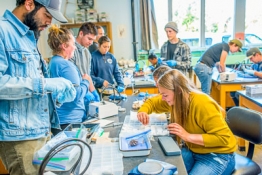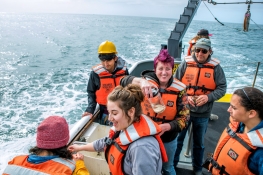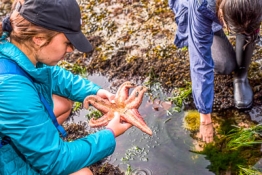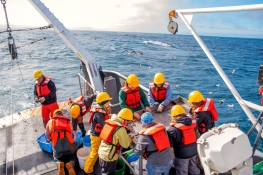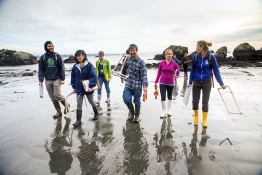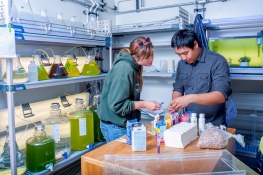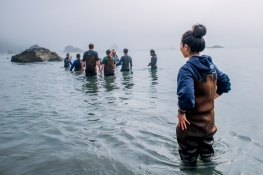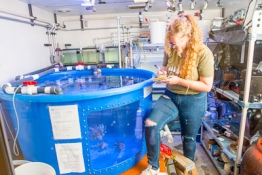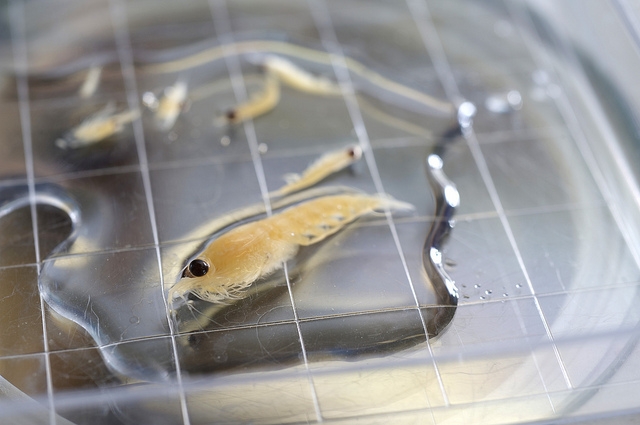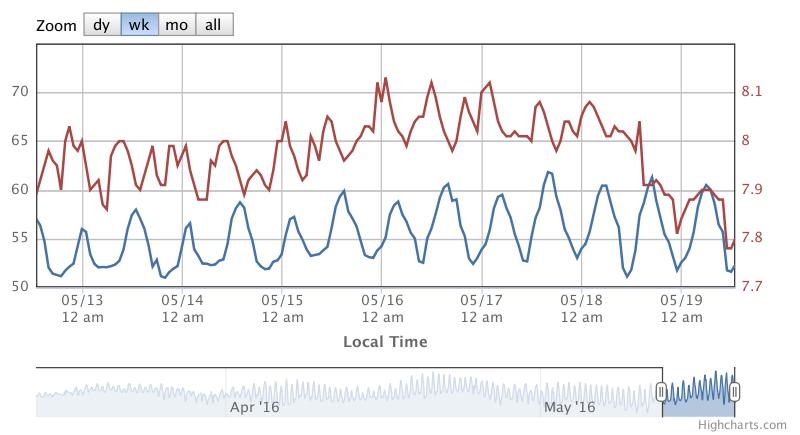Featured Research Projects
Cal Poly Humboldt's proximity to a variety of marine and coastal environments including rivers, lakes, lagoons, Humboldt Bay, and the Pacific Ocean makes it an ideal place for aquatic research.
Humboldt faculty and students are monitoring Northern California fish populations, subtidal reefs, kelp forests, and other ecosystems associated with California Marine Protected Areas to assess their effect on biological diversity and provide data for sound marine resource management.
Humboldt and NOAA scientists are also monitoring oceanographic features of coastal and offshore waters to understand variability of marine ecosystems and their responses to seasonal cycles and larger scale climate dynamics.
Below you will find a sampling of featured research projects. For a more complete list, view the research interests of affiliated Humboldt faculty.
Humboldt Cooperative Fisheries Oceanography Research
The Cooperative Fisheries Oceanography Research Team (CFORT) is based at Cal Poly Humboldt and conducts research focused on informing management of living marine resources as mandated under the Magnuson-Stevens Act, with a focus on the California Current Large Marine Ecosystem (CCLME) and particularly that portion of the CCLME off northern California. Our goal is to provide scientific information that contributes directly to improved management of marine fisheries and living marine resources in an ecosystem context.
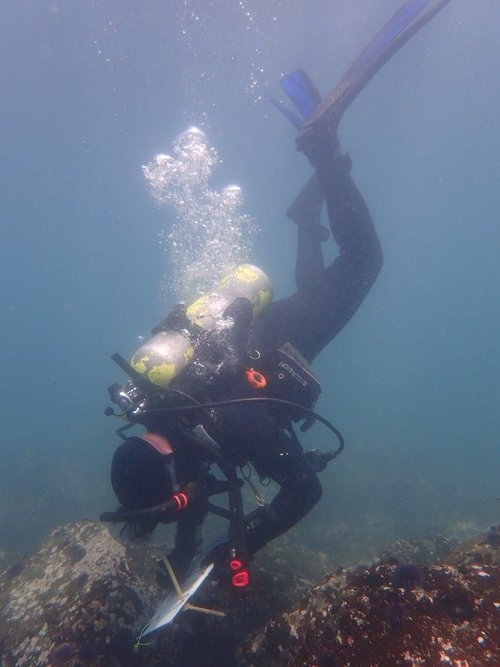
North Coast Subtidal MPA Monitoring
Humboldt is part of a cooperative agreement with the California Ocean Protection Council led by UC Santa Cruz (Dr. Mark Carr) that involves UC Santa Barbara (Dr. Jenn Caselle) and Reef Check California (Dr. Jan Freiwald) in conducting statewide subtidal surveys. Humboldt will collaborate with Reef Check to conduct annual surveys of north coast subtidal reefs and kelp forests in Mendocino, Humboldt and Del Norte counties. We will use SCUBA to measure the physical characteristics of rocky reefs and the relative abundance and sizes of many fishes, mobile and sessile invertebrates and algae at each site.
The lead Humboldt principal investigators are Drs. Brian Tissot and Sean Craig and the student survey team is lead by graduate student Franklin Moitoza. The project team includes Dive Safety Officer Rich Alvarez and Boat Safety Officer Steve Monk.
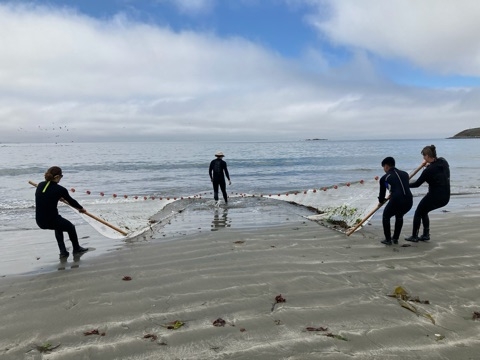
North Coast MPA Sandy Beach Surf Zone Program
Part of the statewide Program out of UC Santa Barbara, we monitor fish communities in sandy beach surf zones and study the benefit of MPAs for this habitat and its communities.
Principal Investigators for the project are Dr. Jose R. Marin Jarrin and Dr. Tim Mulligan; field work is led by graduate student Noah Angell. Prior graduate students: Katie Terhaar (thesis).
Humboldt Ocean Observing Network
The Ocean Observing Group at Cal Poly Humboldt (Humboldt) serves real time and historical coastal oceanographic and meteorological data from sensors it operates as well as from partner organizations. Sensors include the Humboldt Shore Station, Trinidad Pier Station and the Indian Island Station. Also available is the Oyster Conditions Website that features real time data for oyster farmers in Humboldt Bay.
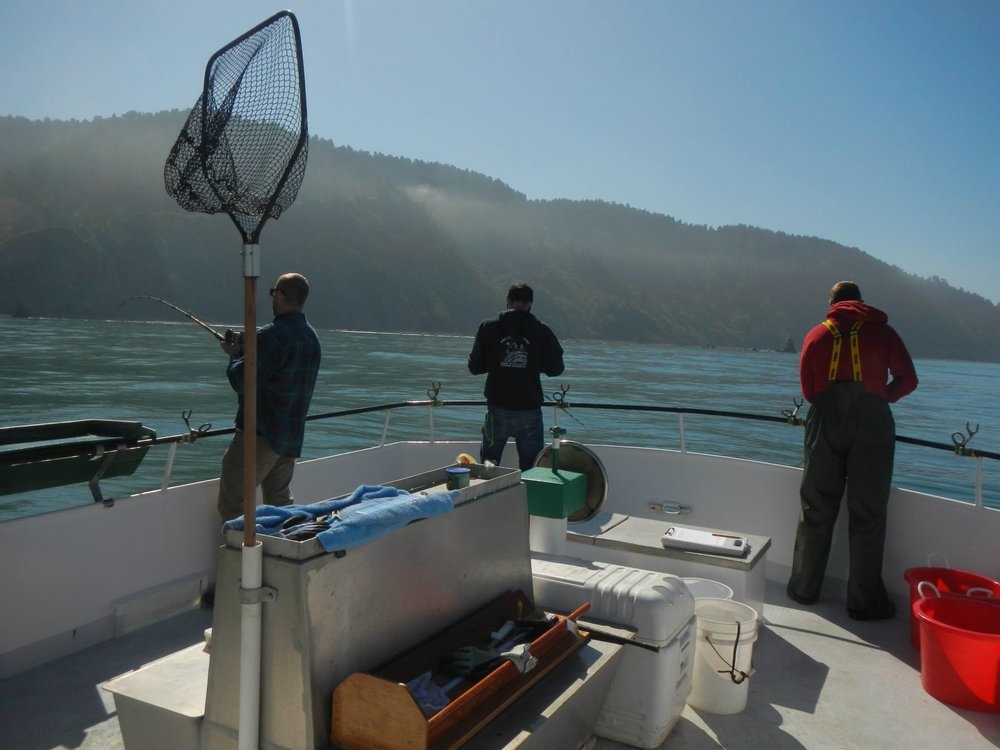
North Coast Collaborative Fisheries Research Program
Part of the statewide California Collaborative Fisheries Research Program, we work with charter captains, recreational anglers, and volunteers to monitor fish populations in and near Marine Protected Areas along the Northern California Coast.
The Principal Investigators for the project are Dr. Andre Buchheister and Dr. Jose Marin Jarrin; field work is led by Clair Stuart.
More about North Coast
Collaborative Fisheries
Research Program
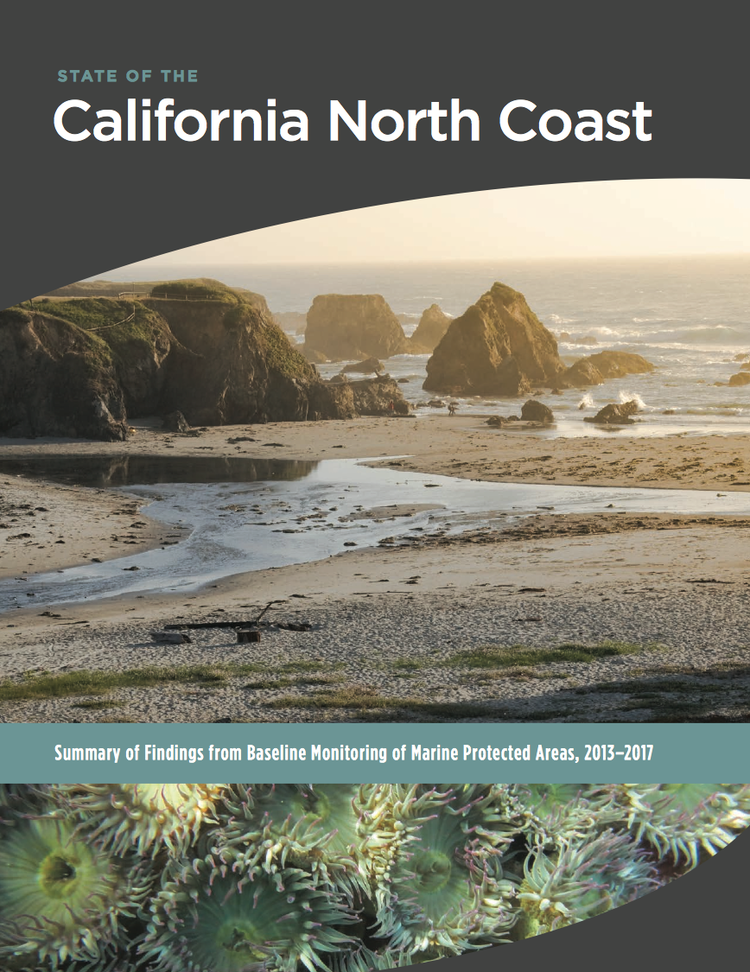
North Coast MPA Baseline Research Projects
The goal of the North Coast Marine Protected Area (MPA) Baseline Program is to establish benchmarks for measuring the performance of the region’s new “underwater parks,” known as marine protected areas, from both ecological and socioeconomic perspectives. The North Coast’s MPAs place restrictions on human activities, such as fishing, in about 13 percent of the region’s state waters and went into effect in December, 2012.
California Sea Grant helps administer the North Coast MPA Baseline Program collaboratively with the MPA Monitoring Enterprise (a program of the California Ocean Science Trust), the California Department of Fish and Wildlife, and the California Ocean Protection Council (which provides funding for the projects). The science grants will support the collection of ecological and socioeconomic information on beaches, reefs and other nearshore ecosystems along the state’s North Coast, which stretches from Alder Creek in Mendocino County north to the Oregon border. A broad collaboration of scientists, fishermen, tribal governments and citizen-science groups from 31 organizations will help gather the data.
